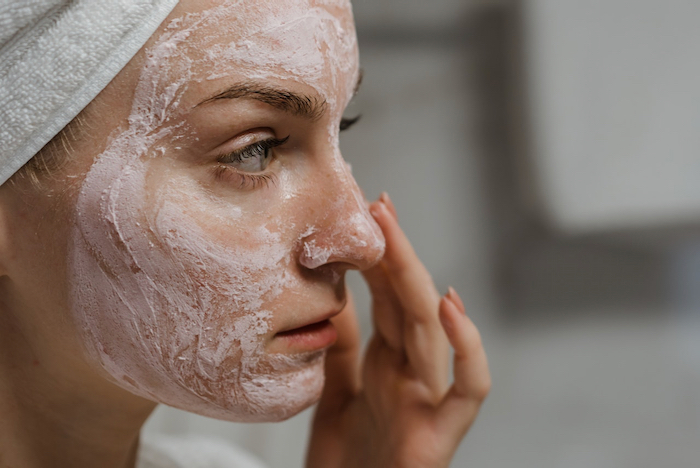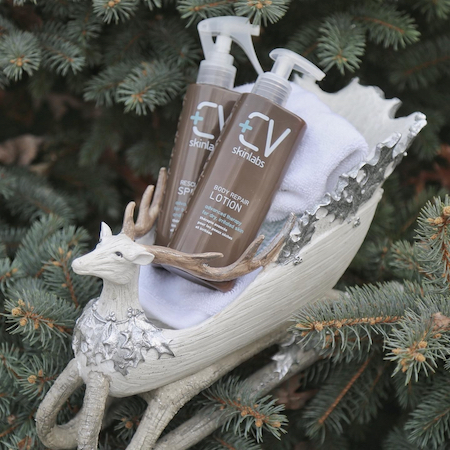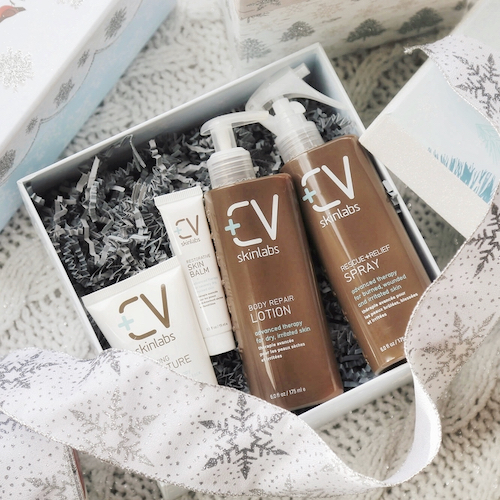
Your wardrobe goes through cycles, but should you adapt skin cycling too?
Skin cycling is a skin-care routine that allows for “rest days” during the week.
Does your skin need to rest? If so, rest from what?
Let’s look more closely at this idea of skin cycling to see if it’s something you may want to do for your skin.
What is Skin Cycling?
Board-certified dermatologist Whitney Bowe created skin cycling routines for her patients for over a year before sharing them on social media.
The idea is that rather than performing the same skin-care routine over and over day in and day out, you instead cycle through the actives in your routine in a three- to four-day cycle.
This is mainly about using powerhouse ingredients like chemical exfoliants and retinol, but not using them all the time.
Bowe started doing this mainly to prevent the irritation that can come about when using chemical exfoliants (like glycolic acid) or retinol products. Using these products every day can cause skin irritation in many people. Skin cycling gives the skin a chance to rest and recover from these types of treatments, without having to stop using them completely.
In other words, you can use retinol for three or four days, then stop using them for the other three or four days of the week.
It’s sort of like intermittent fasting, which often has one eating all one wants on certain days, and significantly limiting calories on other days.
As to why Bowe started creating skin cycling routines for her patients, it’s likely because many of us are over-treating our skin these days.
Skin Cycling Grew Out of the Trend to Overtreat
Bowe told Byrdie.com that after treating thousands of patients for over a decade, she found the biggest mistake people made when it comes to skincare was: “…neglecting to build in nights for their skin barrier to recover.”
We have often talked about the skin barrier here at CV Skinlabs. It is the very outermost layer of skin that provides a barrier between you and the outside world. If you have a strong skin barrier, it protects you from environmental toxins, bacteria, and other microbes, while keeping moisture inside the skin so that it looks and feels its best.
Treatments like exfoliants, retinols, and others that help improve the appearance of the skin can also be hard on the skin barrier. When used carefully, they help slough off dead skin cells and diminish the appearance of fine lines and wrinkles. But when used too much, they can damage the skin barrier and make the skin look and feel worse.
Says Bowe, “People love their powerhouse products—like exfoliants and retinoids—and often believe more must be better. However, their skin often tells a different story when they come into the office with irritation and inflammation.”
After seeing many of her patients struggling with this, Dr. Bowe developed skin cycling. In her words, “The truth is you only need a few products used in a very deliberate way to drive amazing results.”
Bowe tried skin cycling on her patients for a year, then introduced the process on TikTok and Instagram. It quickly became a new beauty trend, which is why we’re talking about it today!
Should You Try Skin Cycling?
You may be wondering if you’re a good candidate for skin cycling. Should you try it?
The answer may be “yes” if:
- You’re someone who has a lot of skin care products in your cupboard and you’re a little worried about maybe using too much.
- You’re overwhelmed by all the products that are out there and you’re not sure where to start.
- You’re struggling with skin irritation and inflammation.
- You’re finding top-tier skin care products like retinoids are expensive and you want to extend their use.
- You want to improve the condition of your skin but you’re hesitant about using hydroxy acids and retinols.
- You’ve tried exfoliants and retinols before and had to stop because of irritation and breakouts.
The answer may be “no” if:
- You’ve already worked hard to get your skin adjusted to using a powerful retinoid every night, and you’ve built up a tolerance—you’re not experiencing irritation.
- You’re using an exfoliating product every day without irritation.
- You have a skin condition like severe acne, eczema, rosacea, or psoriasis (it may still work for you, but check with your dermatologist first).
Tips for a Successful Skin Cycling Routine
Keep in mind that the goal when skin cycling is to improve the condition of your skin through powerful actives. Skin cycling drives the best results while minimizing irritation.
The standard skin-cycling routine as created by Dr. Bowe is a four-night schedule.
Night 1: Exfoliation Night
Dr. Bowe recommends using your most powerful actives at the beginning of the week, so exfoliation night may begin on Monday. Of course, it’s up to you to set up the cycle in a way that works best for your lifestyle. The important thing is to stick with the cycle days as closely as you can.
On the first night of the four-night cycle, thoroughly cleanse your skin, pat dry, then use your chosen exfoliant. This helps slough off dead skin cells and sets up your skin to better receive your active products. Serums and creams can better penetrate skin that lacks that hard layer of dead skin cells on top.
Dr. Bowe and many others recommend chemical exfoliants over physical ones. That means you’re using alpha- and beta-hydroxy acids like glycolic, malic, salicylic, and lactic acids to help slough off dead skin cells and reveal newer, younger-looking skin underneath.
Physical exfoliants, on the other hand, often contain rough particles in them that rub against the skin to slough off dead skin cells. These may include crushed nuts, crystals, sugar, salt, or beads. Physical exfoliation also includes the use of tools like brushes to exfoliate the skin.
The problem with physical exfoliation is that it can cause irritation, inflammation, and breakouts, particularly if you have sensitive skin. Chemical exfoliants are more gentle and are less likely to result in irritation.
Night 2: Retinoid Night
The second night of the cycle is devoted to retinoids. Retinol is a derivative of vitamin A that helps reduce the appearance of fine lines and wrinkles. It speeds up cell turnover and helps you enjoy younger-looking skin. It’s one of the most powerful skin-care ingredients available for delaying the appearance of aging, but it can also be very irritating, particularly for sensitive skin.
This is why skin cycling can be so beneficial. It allows you to gain the benefits of retinol without having to suffer irritation. Many people stop using retinoids because they experience negative results, but skin cycling can often prevent the skin from reacting that way.
So on night two, apply your chosen retinoid product, then follow with your regular moisturizer. (We recommend our Calming Moisture to help prevent irritation and keep your skin feeling its best.) When choosing your retinoid product, consider whether you’ve used retinoids before. If you haven’t, use encapsulated retinol at a low concentration.
Note: If you have eczema, rosacea, or psoriasis, check with your dermatologist before using a retinol product.
Night 3 and 4: Recovery Nights
These nights are deemed “recovery nights” because they are intended to give the skin a chance to recover from the exfoliating and retinoid treatments. That doesn’t mean you leave skin bare on these nights. Instead, you focus on nourishing your skin and repairing the skin barrier so that it’s ready for the next cycle.
This is key to avoiding skin irritation and redness. On these nights, you can use your best recovery serum or moisturizer, apply a moisturizing mask, or even try skin slugging (which we outlined in this post).
We recommend using our Calming Moisture on both recovery nights. This antioxidant-rich moisturizer calms redness and deeply hydrates while repairing skin to boost radiance and create a healthy glow. It has soothing ingredients like glycerin, ceramides, and natural oils and butters.
Repeat
After your second recovery night, it’s time to repeat the cycle. If your skin reacts, you can add one or more recovery nights to your routine. If your skin appears to be responding well, on the other hand, you can continue the cycle as-is, or perhaps reduce your recovery nights to only one.
What Are the Benefits of Skin Cycling?
The main benefit of skin cycling is that it allows you to use exfoliants and retinoids without experiencing irritation. You should notice the following improvements:
- Diminished appearance of fine lines and wrinkles
- Brighter, younger-looking skin
- Reduced acne break-outs
- Smoother, softer skin
- A healed outer barrier that makes skin look stronger
- Improved radiance
Have you tried skin cycling?



